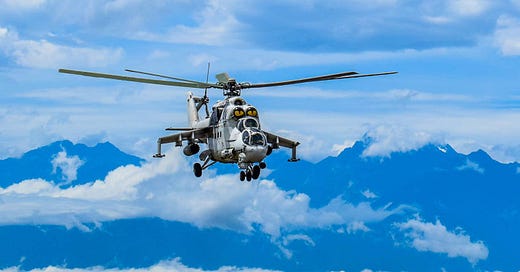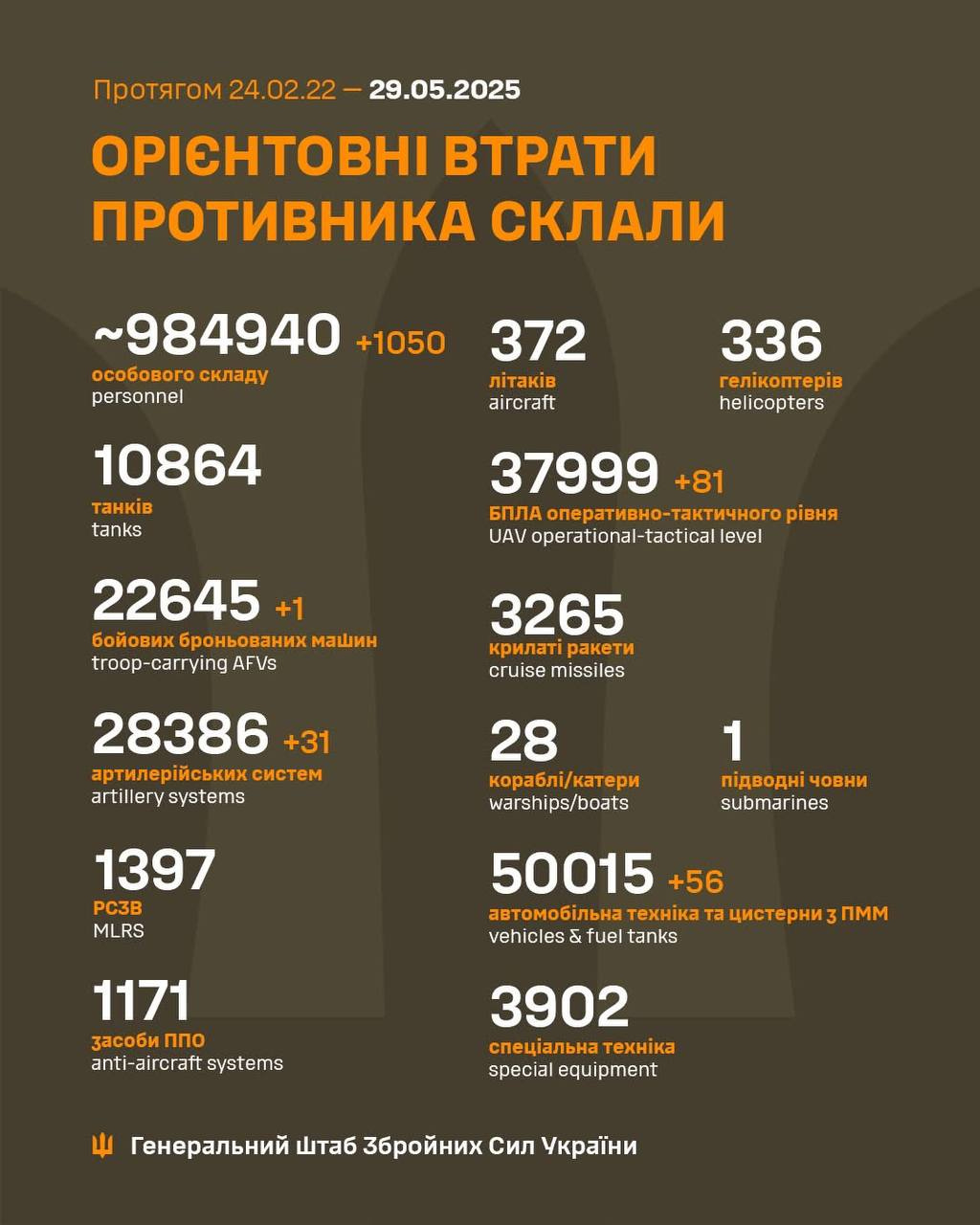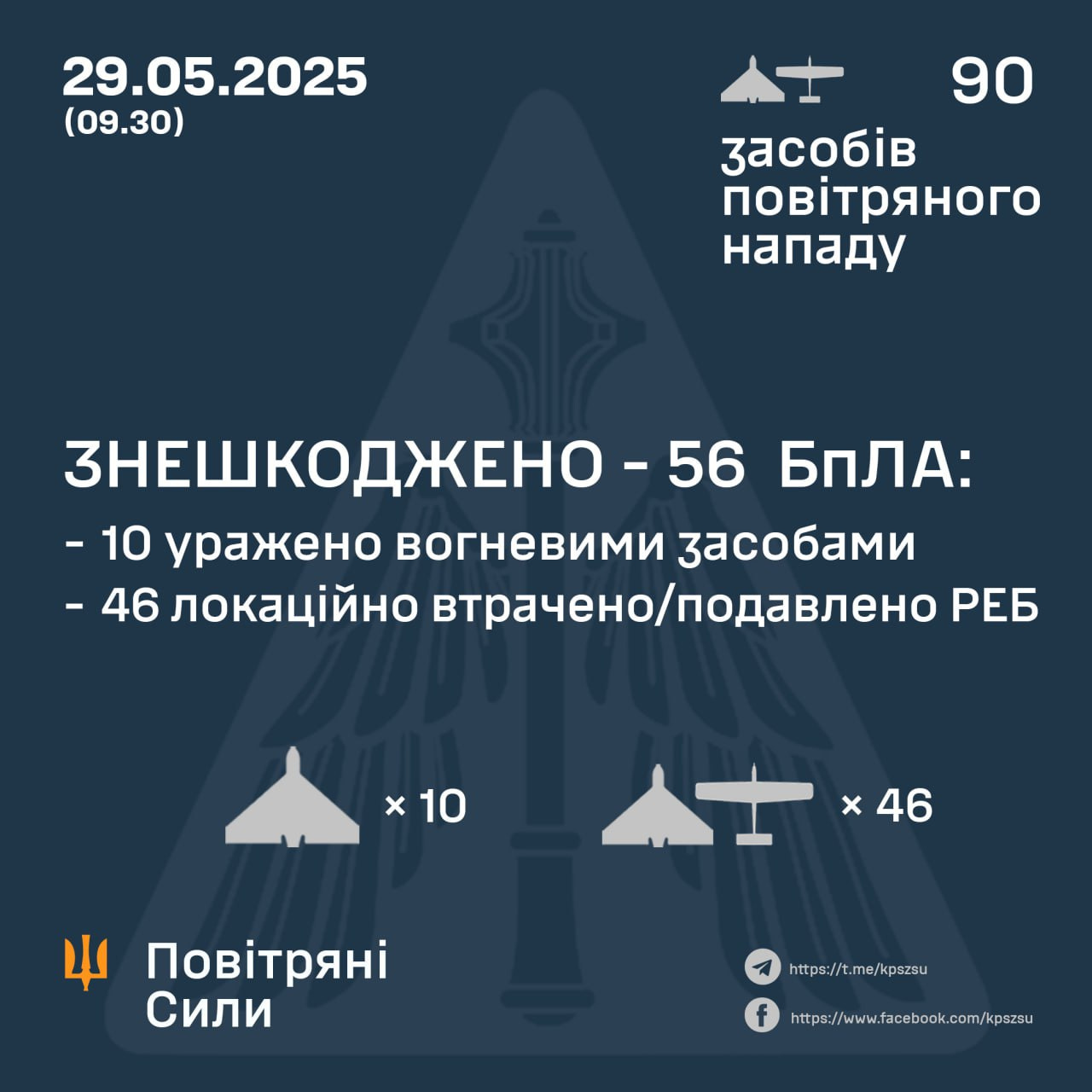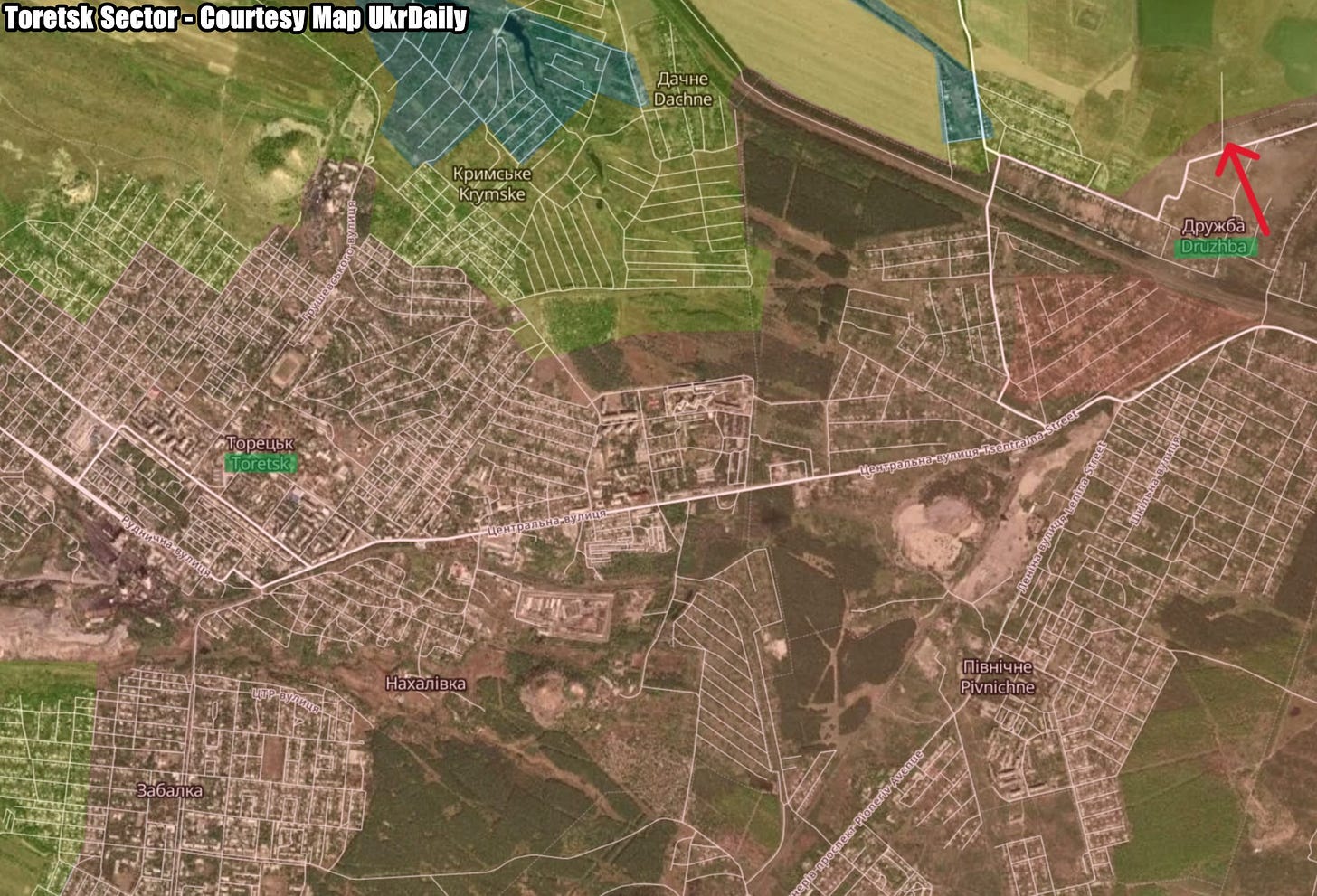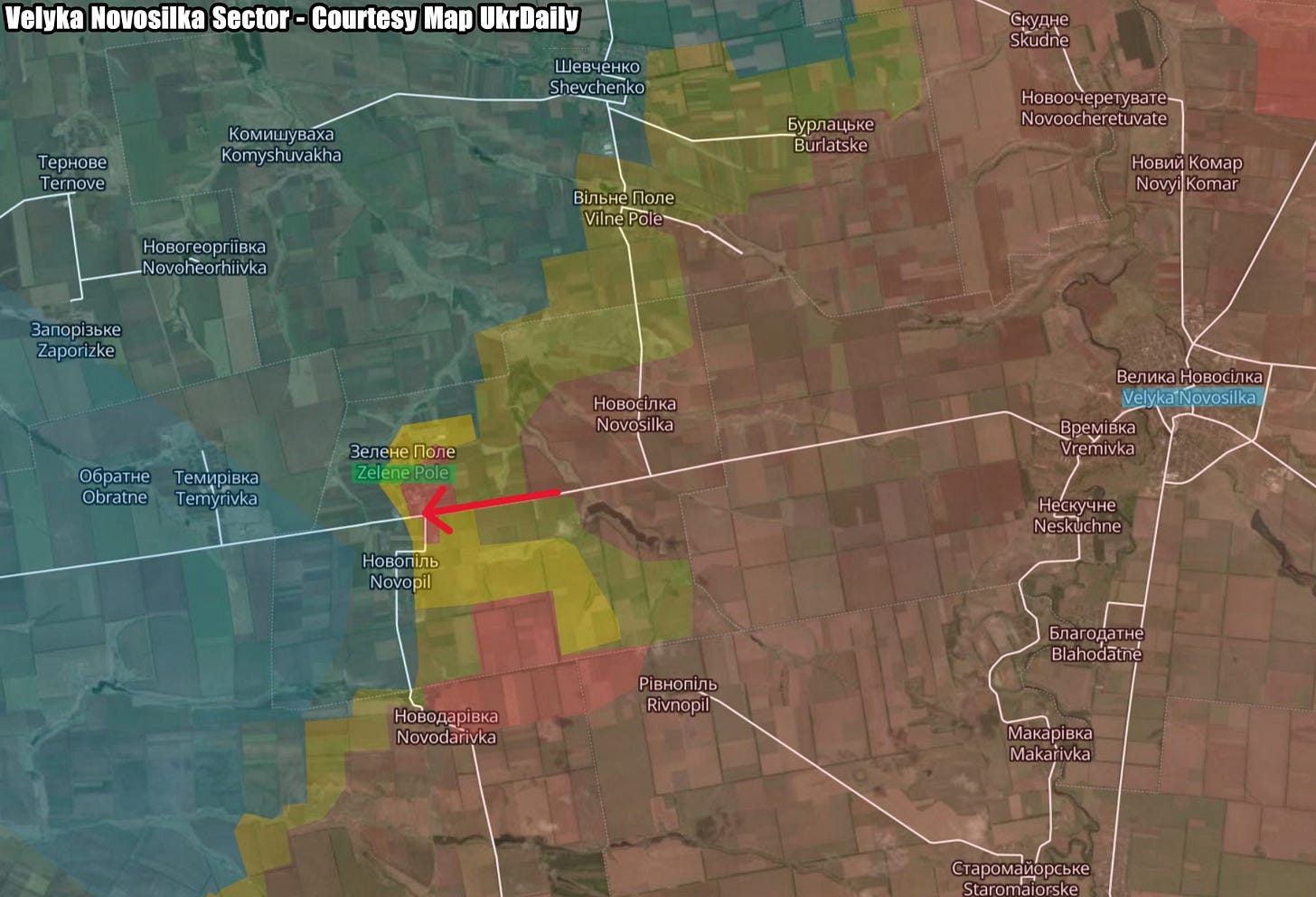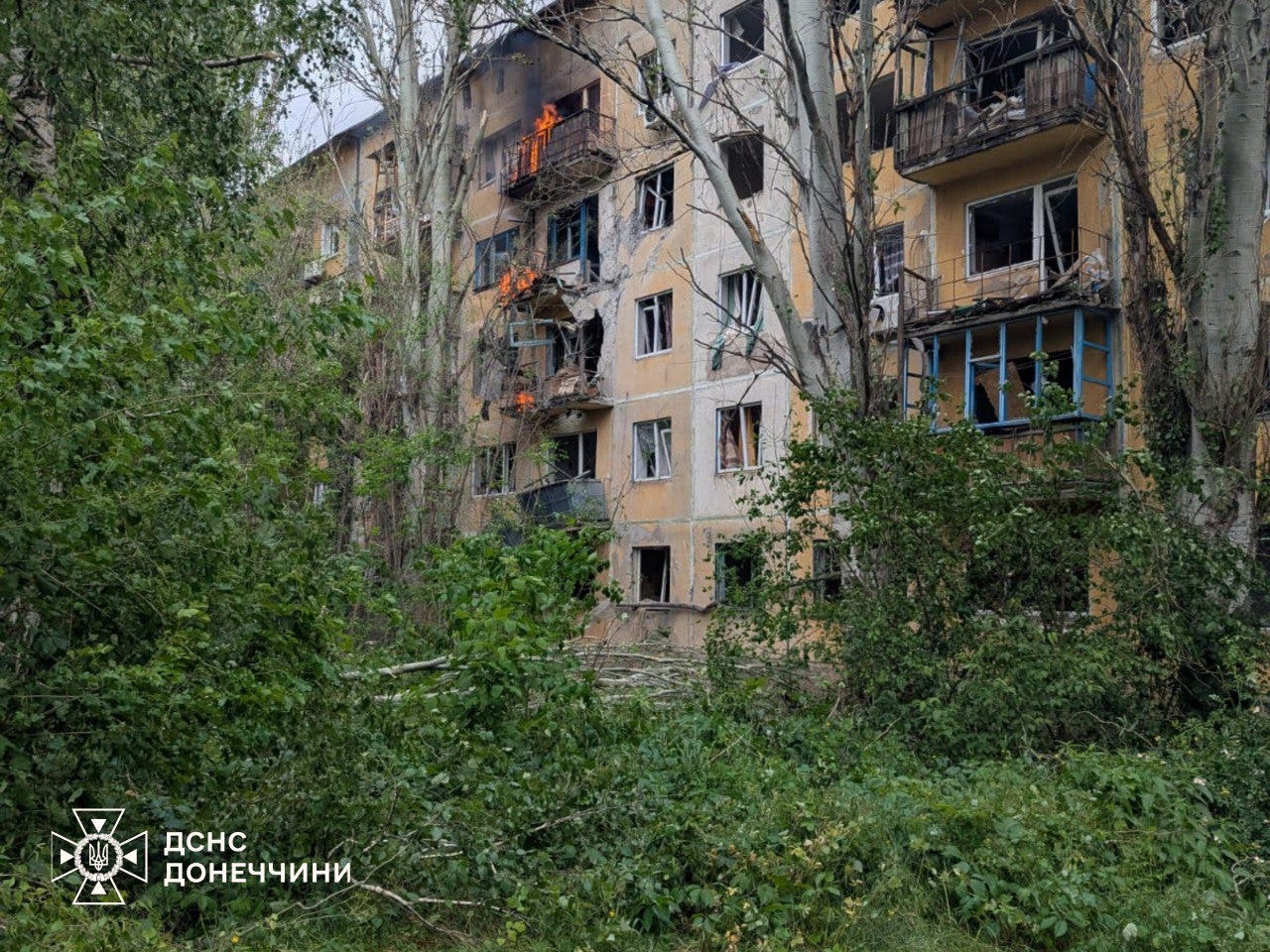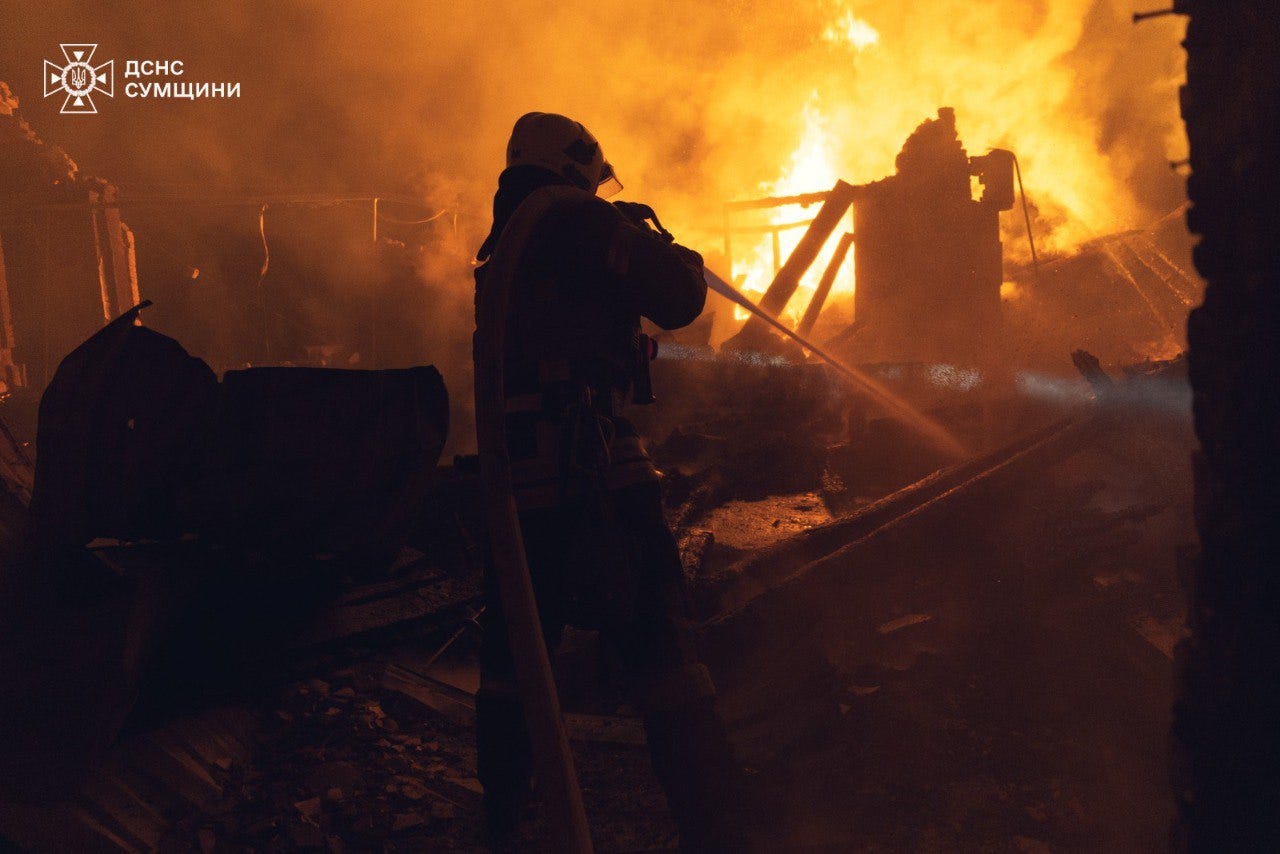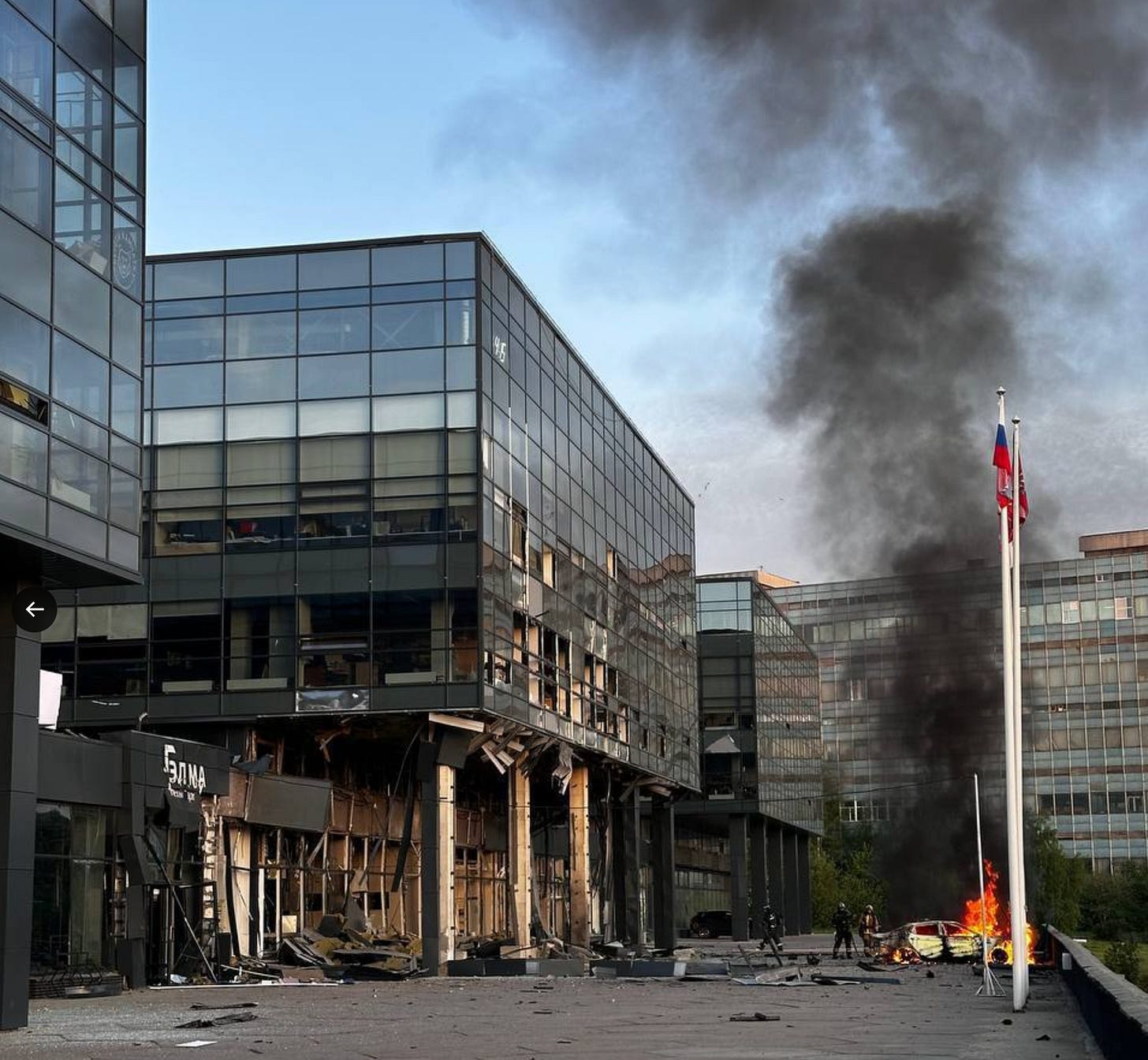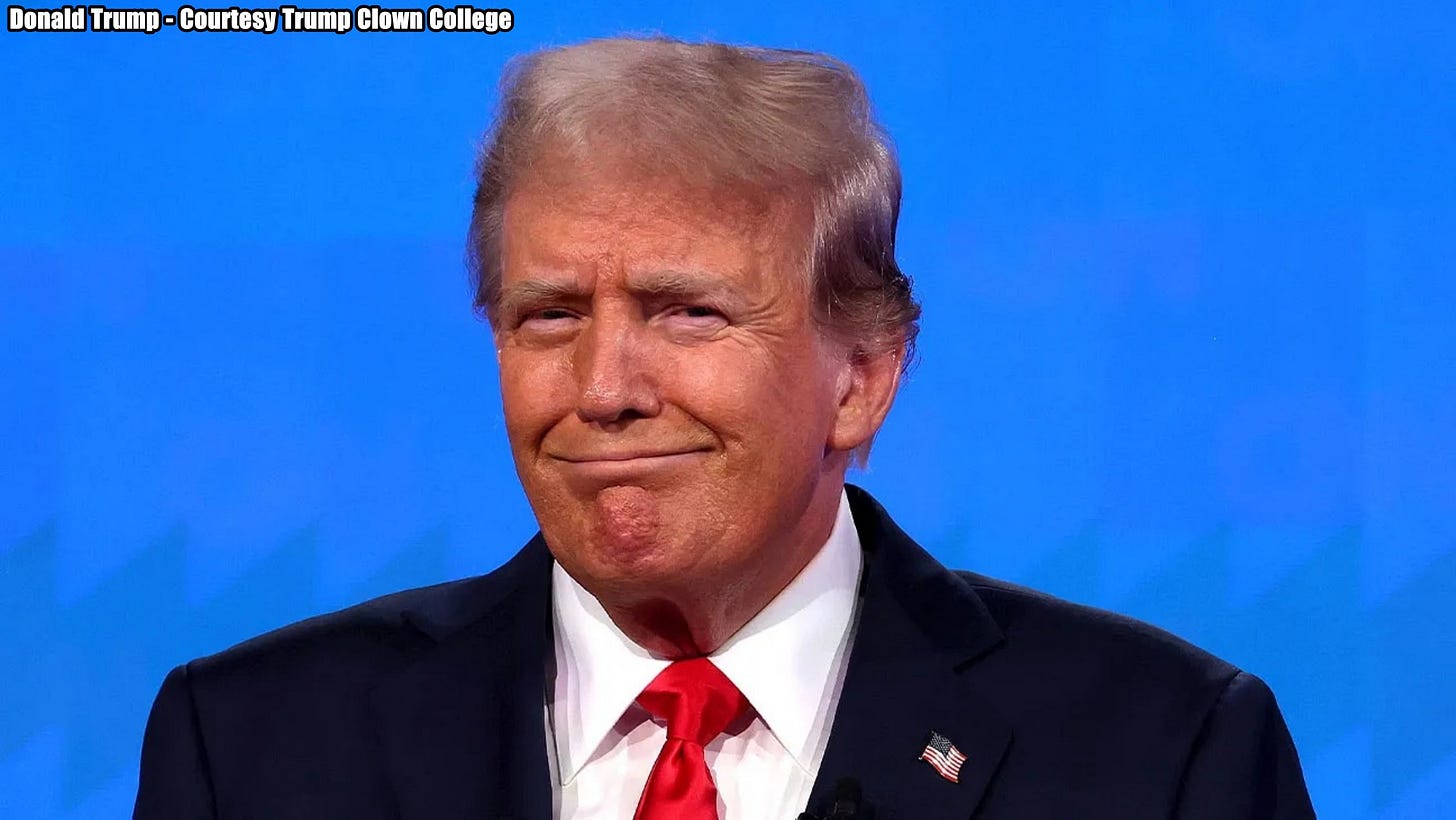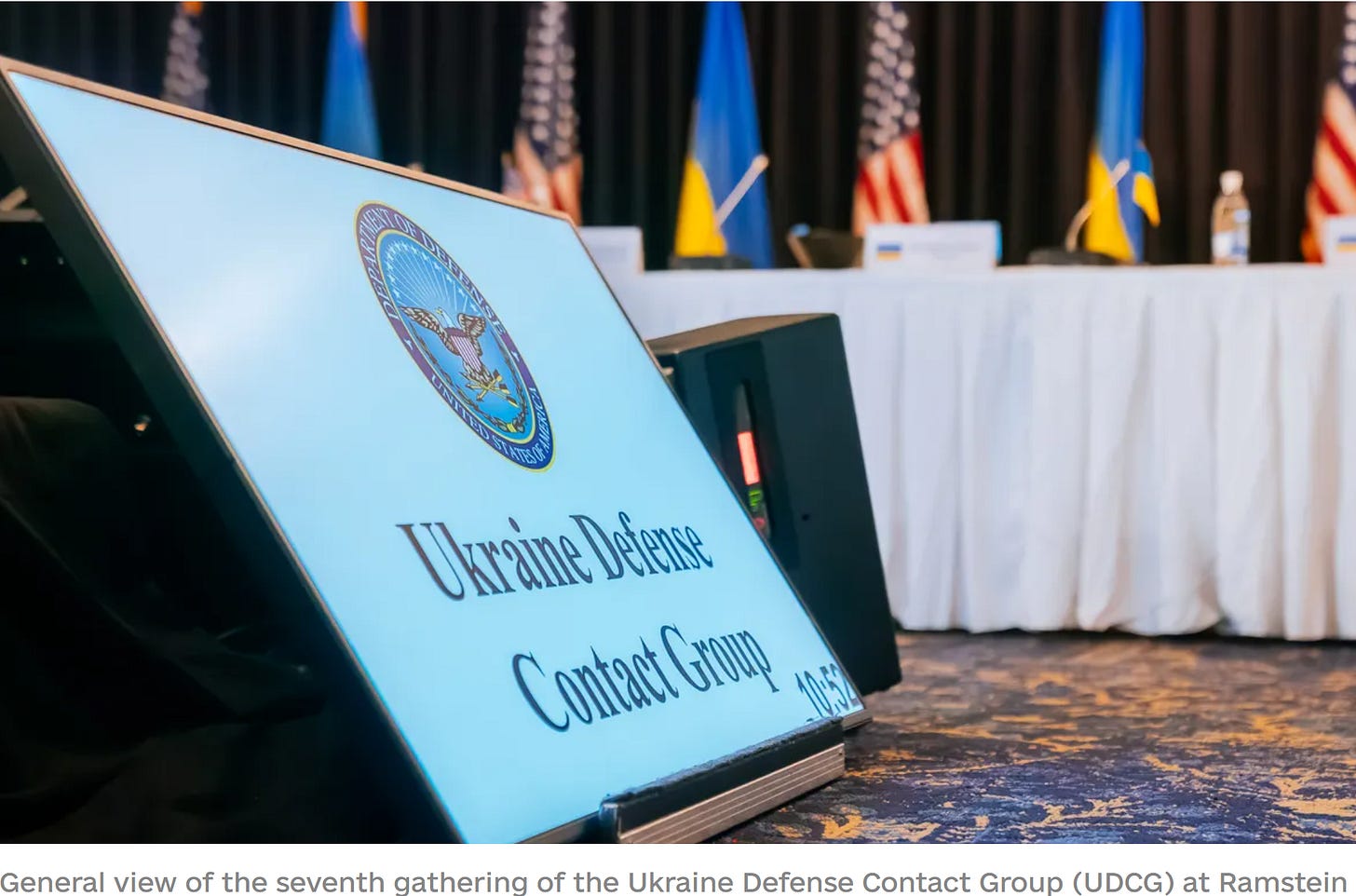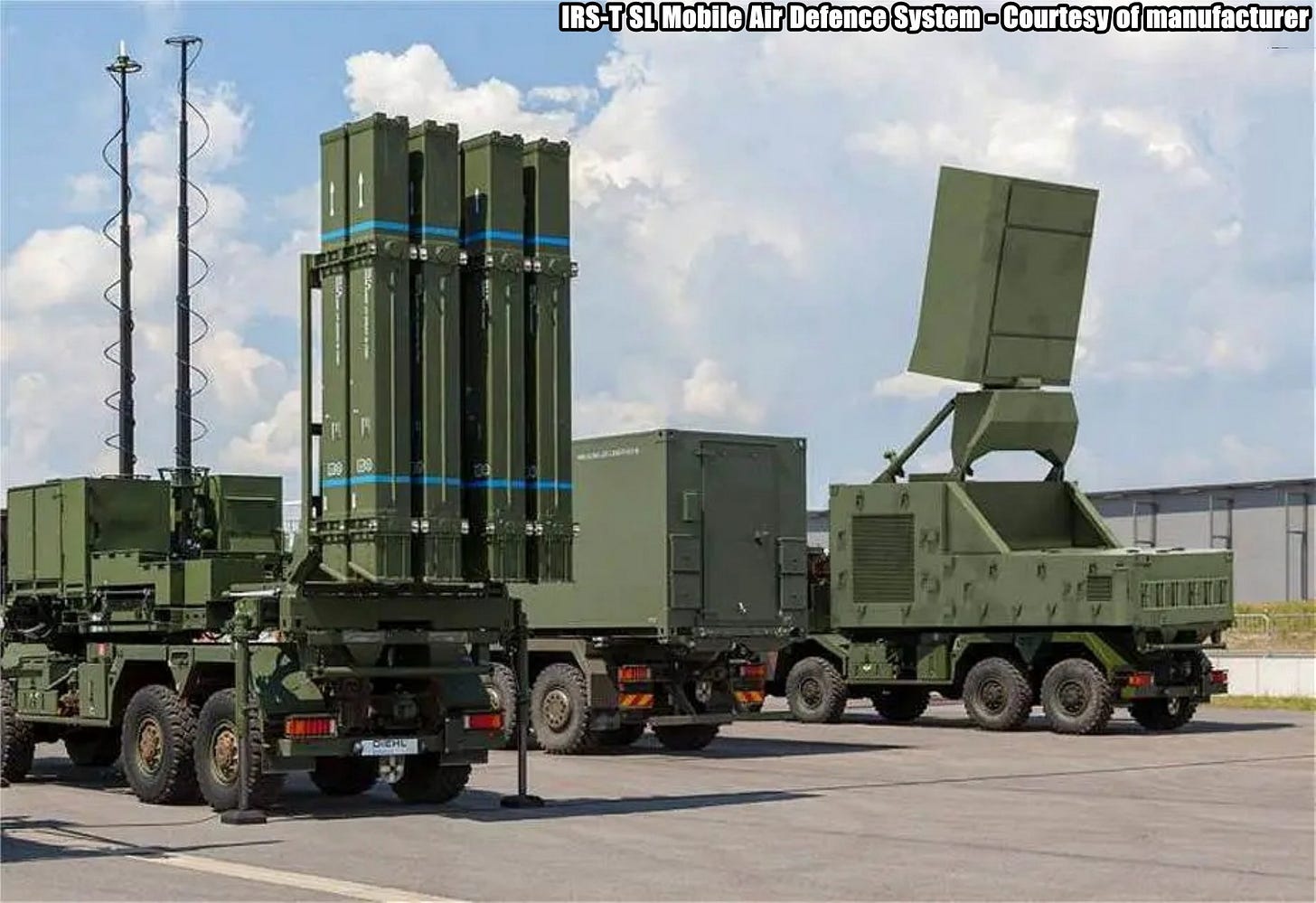Slava Ukraini! In early 2022 I began a Telegram channel aggregating news from a number of sources daily on the war in Ukraine. In June 2023 I began providing a daily draft for the Ukraine War Brief Podcast collecting news from over 70 sources daily, which formed the basis of the script. While the Podcast no longer exists I have continued to make this Brief available for my followers here on Substack for those who wish to keep up with the news from the war.
If you find the Brief informative I would appreciate it if you shared it with others.
All the latest news on the Russo-Ukraine War 6 days per week
ALONG THE CONTACT LINE
GSAFU Morning Report
For: May 29, 2025
The General Staff of the Armed Forces of Ukraine in its Operational Information update at 08:00 on May 29 stated that day 1191 of the full-scale invasion of the Russian Federation against Ukraine had begun.
The situation on the line of combat remains tense in some sectors. Ukrainian defenders continue to actively counteract the Russian aggressor, causing them significant losses in personnel, equipment and technology. Exhausting the enemy along the entire front line and continuing to disrupt the plans of Russian occupiers to advance deeper into the territory of Ukraine.
During the past day, 205 combat engagements took place.
Over the past 24 hours, the enemy carried out 2 missile strikes, 93 air strikes, used 3279 attack drones and fired approximately 5,400 artillery shells across the positions of Ukrainian forces and civilians.
Air Force Daily Report
56 ENEMY UAVS DESTROYED
➖➖➖➖➖➖➖➖➖
On the night of May 29 (from 23:20 on May 28), the enemy attacked with 90 Shahed attack UAVs and simulator drones of various types from the directions: Millerovo, Orel, Kursk - Russia.
A feature of the air strike is that objects in front-line territories were attacked.
The air attack was repelled by anti-aircraft missile troops, electronic warfare and unmanned systems units, and mobile fire groups of the Defense Forces of Ukraine.
As of 09:30, air defenses neutralized 56 enemy Shahed UAVs (and other types of UAVs) in the east and north of the country. 10 were shot down by fire weapons, 46 were lost/suppressed by electronic warfare.
Enemy air attack targets were recorded in 9 frontline locations in Sumy, Kharkiv, and Donetsk regions.
Combat Operations in the Russian Federation
The Institute for the Study of War (ISW), a US based think tank, in its May 28 Russian Offensive Campaign Assessment reported that:
Sumy - Kursk Border: Russian forces recently advanced in Kursk Oblast.
Geolocated footage published on May 27 indicates that Russian forces recently advanced southeast of Novyi Put (southeast of Korenevo).
The Khortytsia operational-strategic group
(Responsible for the northeastern part of Ukraine. )
Chasiv Yar Sector: Russian forces recently advanced in the Chasiv Yar direction.
Geolocated footage published on May 27 indicates that Russian forces recently advanced along Dniprovska Street in central Chasiv Yar.
Toretsk Sector: Russian forces recently advanced in the Toretsk direction.
Geolocated footage published on May 27 and 28 indicates that Russian forces recently advanced north of Druzhba (east of Toretsk) and to western Yablunivka (northwest of Toretsk).
The Tavria operational-strategic group
(Responsible for the central-eastern and southeastern part of Ukraine.)
Pokrovsk Sector : Russian forces recently advanced in the Pokrovsk direction.
Geolocated footage published on May 27 indicates that Russian forces recently marginally advanced northwest of Yelyzavetivka (east of Pokrovsk).
Velyka Novosilka Sector: Russian forces recently advanced in the Velyka Novosilka direction.
Geolocated footage published on May 28 shows Russian forces raising a flag in central Zelene Pole (west of Velyka Novosilka), indicating that Russian forces recently seized the settlement.
The Odesa operational-strategic group
(Responsible for Kherson, Qırım, (also known as Crimea) and the Black Sea.)
There have been no major changes to the combat environment since our last report.
TEMPORARILY OCCUPIED TERRITORIES
Nothing major to report.
THE HOME FRONT
Russian attacks against Ukraine kill 3, injure 27 over past day.
Russian attacks against Ukraine killed three people and injured 27 others over the past day, the Kyiv Independent reported citing regional authorities on May 29.
A Russian drone attack killed a man in the Bilopillia community in Sumy Oblast overnight and injured a woman, according to the local authorities.
One person was killed in the village of Rivne in Donetsk Oblast, Governor Vadym Filashkin said. Thirteen other people suffered injuries in the region over the past day.
A Russian guided aerial bomb attack on the village of Verkhnia Tersa in Zaporizhzhia Oblast killed one person and injured another one, Governor Ivan Fedorov said. The attacks destroyed five houses and damaged 50 more, with about 600 homes left without electricity.
Russian forces attacked the Nikopol district in Dnipropetrovsk Oblast, injuring two people.
In Kherson Oblast, Russian forces targeted 40 settlements, including the regional center of Kherson. Ten people were injured, Governor Oleksandr Prokudin reported.
RUSSIAN WORLD
Mariupol Siege Air Commander Killed in Bomb Attack.
A former Russian officer who commanded air operations during the siege of Mariupol and later became deputy mayor of Stavropol was killed in an apparent bomb attack overnight, the Moscow Times reported citing officials on Thursday.
Stavropol Mayor Ivan Ulyanchenko confirmed the death of his first deputy, Major Zaur Gurtsiyev, 34, a veteran of Russia’s full-scale invasion of Ukraine.
Stavropol region Governor Vladimir Vladimirov had said earlier that Gurtsiyev died in a “nighttime incident,” adding: “All leads are being followed, including the possibility of a terrorist attack organized by Ukrainian Nazis.”
The local branch of Russia’s Investigative Committee, which probes major crimes, said two people were killed in the explosion, identifying the second man only as a 29-year-old acquaintance of Gurtsiyev. It said the acquaintance was believed to have set off an improvised explosive device.
Law enforcement authorities launched a criminal investigation into murder and illegal weapons trafficking, adding that the explosion may have been “an act of terrorism.” Alexander Bastrykin, head of Russia’s Investigative Committee, ordered regional officials to report on the probe’s progress.
Surveillance footage shared by Telegram channels linked to Russian law enforcement agencies showed an explosion after one man approached another near a parking lot. The channels identified one of the men as Gurtsiyev, though officials have not commented on the video.
According to the Time of Heroes website — a state initiative for training war veterans for civilian government roles — Gurtsiyev oversaw air operations during Russia’s devastating siege of the southern Ukrainian port city of Mariupol. His biography states he “implemented best practices in missile guidance technology,” improving strike “accuracy and efficiency.”
Human Rights Watch says that at least 8,000 people were killed during the siege of Mariupol, which lasted between March and May 2022.
Gurtsiyev became Stavropol’s first deputy mayor in September 2024.
Russia at Rising Risk of Systemic Banking Crisis, State-Linked Economists Warn.
The probability of a systemic banking crisis in Russia is on the rise, the Moscow Times reported citing a new report from a state-affiliated economic think tank.
Experts at the Center for Macroeconomic Analysis and Short-Term Forecasting (CMASF) warn that while a full-blown crisis has not yet materialized, several warning signs point to a high likelihood of one happening.
In its latest analysis, CMASF describes the current situation as a "resonance" of negative economic signals: rising bad debts, early indications of depositor flight and mounting pressure on both businesses and consumers from high interest rates.
The group is now closely tracking not just indicators of crisis onset, but also signs that any future crisis could be prolonged.
A systemic banking crisis, as defined by CMASF, would involve at least one of three conditions: non-performing loans exceeding 10% of total banking assets, a significant withdrawal of funds by depositors, or large-scale bank recapitalizations exceeding 2% of the country’s GDP.
None of those conditions have been met so far, but the underlying risks are steadily growing, the report says.
The Russian Central Bank, which has maintained a tight monetary policy to combat inflation, acknowledges that high interest rates are putting strain on the financial system.
Corporate borrowers are increasingly struggling to service their debt, while households are accumulating bad loans at a growing pace.
Loan issuance is slowing, and signs of credit stress are beginning to emerge at the country’s two largest lenders, Sberbank and VTB.
In a recent financial stability report, the Central Bank identified corporate credit risk and consumer over-indebtedness as two of the six primary vulnerabilities in the financial system. It noted a marked increase in the cost of credit risk and a deterioration in repayment rates, particularly among retail borrowers.
To contain the fallout, the Central Bank has called on banks to offer greater flexibility on loan restructurings and has relaxed reserve requirements for restructured loans beginning in July.
In March and early April, Russian banks restructured 2.3 trillion rubles (about $25 billion) worth of loans, though the pace has since slowed significantly.
Although the Central Bank maintains that the situation remains manageable, the numbers tell a more complicated story. As of the end of April, problem loans totaled 5.2 trillion rubles ($66.2 billion) — 3.2 trillion in corporate debt and 2 trillion in retail — representing less than 5% of total banking assets.
But ratings agency ACRA estimates that problematic loans could surge to the equivalent of 20% of the system’s capital by year’s end, or 3.7 trillion rubles.
Some of Russia’s largest corporations are already feeling the pressure. The Central Bank reports that 13 of the country’s 78 largest firms now earn less in profits than they owe in interest — an unsustainable dynamic if high rates persist.
Still, the regulator argues that most industries, with the exception of coal, are adapting to the new monetary environment. It emphasizes that banks are well-capitalized, with reserve buffers covering more than 70% of risky loans. Retail lending alone had a buffer of 1.3 trillion rubles ($16.5 billion) as of March.
Russia has weathered banking crises before, most recently in 2014-2015, when a crash in oil prices and Western sanctions over the annexation of Crimea sparked a deep financial shock.
That episode was successfully predicted by CMASF’s early-warning indicators, similar to those now raising concern.
Ukraine conducts a number of long range tactical drone strikes in Russia over the last several days.
The Institute for the Study of War (ISW), a US based think tank, in its May 28 Russian Offensive Campaign Assessment reported that Ukrainian forces conducted a series of long-range drone strikes targeting Russia's defense industrial base (DIB) on May 27 and 28. The Ukrainian General Staff reported on May 28 that Ukrainian Special Forces and Ukraine's Security Service (SBU) struck the Kronshtadt drone factory in Dubna, Moscow Oblast.
The Ukrainian General Staff noted that the plant specializes in producing drone ground-control systems for the Orion, Inokhodets, Molniya, Grom, Termin, Helios, and Sirius drones. Geolocated footage shows drones striking the Kronshtadt plant.
The Ukrainian General Staff reported that the SBU also struck the Raduga plant in Dubna, which manufactures cruise missiles, including Kh-101/55 missiles, Kh-69 missiles, and Kh-59MK missiles.
Geolocated footage shows a drone strike against the Raduga plant. The Ukrainian General Staff reported that Ukrainian forces also struck the Angstrem plant in the Elma Technological Park in Zelenograd, Moscow Oblast, which is one of Russia's largest microchip manufacturing plants.
Geolocated footage shows Russian air defense systems downing a Ukrainian drone over Zelenograd, a drone striking the technological park, and the aftermath of the drone strikes against the technological park. Ukrainian Center for Countering Disinformation Head Lieutenant Andriy Kovalenko, who often reports on successful Ukrainian drone strikes against Russia, reported on May 28 that Elma Park is a critical hub for Russian import substitution.
Kovalenko also reported that Ukrainian forces struck the Dubna Machine Building Plant (DMZ), which produces drones, avionics, and control systems. A Russian insider source claimed that the DMZ also assembles Kh-101, Kh-5, and Kh-59 cruise missiles. Russian opposition outlet Astra reported that Ukrainian forces conducted a drone strike against the Murom Instrument Plant, which produces ignition devices, on the night of May 27 in Vladimir Oblast. The Ukrainian General Staff also confirmed earlier reports that Ukrainian forces conducted a drone strike against the Dmitrievsky Chemical Plant in Kineshma, Ivanovo Oblast on May 26.
RELATED INTERNATIONAL NEWS
Pressure mounting on reluctant Trump to impose sanctions on Russia.
Some Republicans in Congress and White House advisers are urging U.S. President Donald Trump to finally embrace new sanctions on Moscow as frustration mounts over Russian President Vladimir Putin's military assault on Ukraine, Reuters reported on May 29.
Trump has held off on such penalties for months, believing he could have fruitful dealings with Putin to end the war and considering sanctions in general to be overused and often ineffective.
White House officials say Trump still hopes to develop an economic partnership with Russia. He sees sanctions as an escalation in tensions with Moscow that could derail hopes of a ceasefire in the three-year-old conflict.
But his frustration with Putin is genuine and increasingly severe, according to aides. They said he is giving sanctions serious consideration after Russia escalated its attacks in recent days.
"He is always looking at different ways to apply pressure," a senior White House official said. "This is no different. He's always weighing his options."
U.S. officials have prepared new economic sanctions against Russia, including banking and energy measures. They say that sanctions package is ready to implement based on Trump's order.
One option supported by some Trump advisers would be for the president to embrace, or at least not obstruct, legislation introduced by Republican Senator Lindsey Graham and Democratic Senator Richard Blumenthal last month that would set a 500% tariff on goods imported from countries that buy Russian oil.
Some advisers believe the bill could be useful because it would allow consequential sanctions to go into effect while Trump could in essence tell Putin the sanctions decision was out of his hands, according to one U.S. official with direct knowledge of the matter. That in turn could help Trump maintain a viable line of communication with Putin.
That U.S. official and another person familiar with internal deliberations said the Trump White House believes secondary sanctions - that is to say sanctions on countries that do business with Russia, not just Russia itself - are needed for them to be effective.
Graham and fellow Republican Senator Chuck Grassley, both close Trump allies, said this week that now is the time to increase pressure on Putin.
"I believe President Trump was sincere when he thought his friendship w Putin would end the war. Now that being the case, IT'S TIME FOR SANCTIONS STRONG ENUF SO PUTIN KNOWS 'game over,'" Grassley said in a social media post on Tuesday.
Trump entered office in January predicting he would be able to end the war in Ukraine in 24 hours. But in the months since, he has absorbed the grim reality that the conflict is more intractable than he originally believed and has blamed his predecessor, Joe Biden, for allowing it to happen.
Last week, Trump spoke with Putin for two hours and thought he had a deal to begin ceasefire negotiations immediately. Then Russia launched a barrage of drone and missile attacks on Ukraine, prompting Trump to say Putin had "gone absolutely CRAZY" and that he was "playing with fire" by refusing to engage in ceasefire talks with Kyiv.
Speaking to reporters in the Oval Office on Wednesday, Trump explained why he felt imposing sanctions could antagonize Putin.
"If I think I'm close to getting a deal, I don't want to screw it up by doing that," he said.
Asked whether Putin wanted to end the war, Trump said, "I can't tell you that, but I'll let you know in about two weeks," noting he was waiting on Russia to submit its latest peace proposal.
"We're going to find out whether or not he's tapping us along or not, and if he is, we'll respond a little bit differently," Trump added.
Trump has threatened sanctions before, only to back off. He talked about the possibility of sanctions back in January and again before his most recent call with Putin.
Putin said last week that he had agreed to work with Ukraine on a memorandum that would establish the contours of a peace accord, including the timing of a ceasefire. Russia says it is currently drafting its version of the memorandum and cannot estimate how long that will take.
Republicans generally have followed Trump's lead on foreign policy in the months since he began his second term in office, making their pursuit of sanctions on their own noteworthy.
White House officials have held conversations with Senate Republicans about the contents of the sanctions bill, according to one of the U.S. officials.
Should the Senate bill move forward, there is a bipartisan companion bill in the House of Representatives, although support for Ukraine among House Republicans has been notably weaker than in the Senate.
The European Union, meanwhile, has been ramping up sanctions on Russia. An EU measure adopted last week hit over 130 entities and individuals, and listed 75 new sanctions entities including major oil firm Surgutneftegaz.
In meetings in recent days in Washington, U.S. officials have said they have no qualms with the new measures, according to one person with direct knowledge of the matter.
Trump admits to protecting Russia from 'really bad things'
U.S. President Donald Trump claimed on May 27 that Russia would already be facing serious consequences if not for his actions, following one of the most intense Russian aerial assaults on Ukraine, the Kyiv Independent reported.
Trump in a post on Sunday said Putin had "gone absolutely CRAZY" by unleashing a massive aerial attack on Ukraine.
"What Vladimir Putin doesn't realize is that if it weren't for me, lots of really bad things would have already happened to Russia, and I mean really bad. He's playing with fire," Trump wrote on Truth Social on Tuesday. The president, who prides himself on having friendly relations with Putin, did not elaborate.
"Regarding Trump's words about Putin 'playing with fire' and 'really bad things' happening to Russia. I only know of one REALLY BAD thing — WWIII. I hope Trump understands this!" Top Russian security official Dmitry Medvedev wrote in English on the social media.
Trump's comments mark a rare public rebuke of Russian President Vladimir Putin amid growing pressure on the U.S. administration to respond to escalating Russian attacks.
Trump recently held a two-hour phone call with Putin during which Russia reiterated its refusal to a full ceasefire in its war against Ukraine. Despite this, Trump has refused to impose new sanctions on Moscow, citing ongoing efforts to reach a ceasefire.
"Because I think there's a chance of getting something done, and if you do that, you could also make it much worse," Trump said during a May 19 Oval Office briefing.
Trump has attempted to present himself as the only leader capable of ending the war quickly, though the lack of tangible pressure on Moscow has left Kyiv and its allies skeptical.
President Volodymyr Zelenskyy, responding to the May 25 overnight bombardment, called for urgent new sanctions and warned that "America's silence, and the silence of others around the world, only encourages Putin."
The European Union and U.S. lawmakers have also called for tougher action.
A bipartisan sanctions bill is already awaiting approval in Congress, with provisions for sweeping financial penalties and tariffs on nations buying Russian oil or uranium.
Next Ramstein summit to take place on June 4 in Brussels.
The upcoming Ukraine Defense Contact Group (UDCG) meeting in the Ramstein format will be held on June 4 in Brussels under the chairmanship of the U.K. and Germany, NATO announced on May 29, the Kyiv Independent reports.
The Ramstein summit will take place as Washington is trying to broker a peace deal between Ukraine and Russia to end Moscow's full-scale war.
In the meantime, Russia is massing forces for a new offensive against Ukraine while continuing its attacks on civilians across the country, straining Ukrainian air defenses.
The last Ramstein-format UDCG meeting took place in Brussels on April 11 under the chairmanship of London and Berlin — a position previously held by the U.S.
Leadership over Ramstein transitioned following the inauguration of U.S. President Donald Trump.
During the previous meeting, NATO allies committed more than 21 billion euros ($23.8 billion) in long-term military aid to Ukraine.
The move came amid growing uncertainty over U.S. support for Ukraine and efforts by European allies to close the gap as Kyiv resists Russia's ongoing war.
MILITARY & TECH
Germany pledges 5 billion euros in new aid to Ukraine, no Taurus missiles announced.
Germany has unveiled a military aid package for Ukraine worth 5 billion euros ($5.65 billion), the country's Defense Ministry said in a statement on May 28 after Chancellor Friedrich Merz and President Volodymyr Zelenskyy met in Berlin, German newspaper Welt reported.
German Defense Minister Boris Pistorius and Ukrainian Defense Minister Rustem Umerov signed the accord in Berlin's Bendlerblock, the headquarters of the German Defense Ministry. The agreement includes direct German investments in Ukraine's defense industry and a broader treaty between Kyiv and German arms manufacturers.
Under the new agreement, Germany will help fund the production of long-range weapons systems inside Ukraine — tapping into the country's existing industrial capacities and technical expertise, the statement read.
The German Defense Ministry said a significant number of these systems are expected to be manufactured by the end of 2025, with the first batch ready for deployment in the coming weeks. Since these systems are already in service with the Ukrainian military, no additional training is needed for their use.
Berlin also reaffirmed its commitment to supply Ukraine with critical ammunition and weapons. The arms heading Kyiv's way include air defense systems, artillery, land weapons systems, and handguns. No Taurus missiles were publicly announced as part of the package.
Germany has declined to provide additional details on the package's content, in line with its new information security policy regarding arms supplies to Ukraine.
Welt reported that the package includes about 400 million euros ($450 million) for the production of Ukrainian long-range BARS and AN-196 drones and Flamingo interceptor drones.
The package further contains four IRIS-T air defense systems and funding for contracts for the repair of military vehicles in Ukraine, namely Gepard air defenses. Berlin also pledged to help finance the operations of the Starlink satellite communications system in Ukraine.
"Germany has committed to supporting investment in the Ukrainian defense industry and encouraging others to do the same, particularly in the area of air defense," Umerov said on social media after the agreement was announced. "Sincere thanks to our partners for their leadership and consistent support of Ukraine in resisting Russian aggression."
The meeting between Merz and Zelensky in Berlin was preceded by speculation that Germany would finally reverse its long-held policy of not sending Taurus missiles to Kyiv over fears of escalating the war against Russia.
Before becoming chancellor, Merz, elected for the CDU/CSU conservative alliance, signaled he would overturn a ban imposed by his predecessor, Social Democrat Olaf Scholz.
Ukraine has been using U.S.-made ATACMS for over a year, and U.K.-French Storm Shadows for more than two.
Only in late 2024, the Biden administration and other allies eased the restrictions, allowing Ukraine to use long-range missiles against Russian military targets on Russian territory.
In range, speed, and payload, Taurus much resembles the Storm Shadow, which is made by Taurus’ manufacturer, MBDA’s French affiliate.
The primary distinction for Taurus is in the design of the actual warhead — Taurus can be programmed to explode after hitting a specific target, such as a bunker.
The missile can penetrate and actually count layers before the final explosion, maximizing damage.
Taurus would represent a major upgrade to Ukraine’s deep-strike firepower, primarily because it can blast through denser Russian fortifications. It would also help in Ukraine's years-long quest to take down the Crimean Bridge.
As part of the new agreement, the two nations have also agreed to establish repair facilities in Ukraine to improve the sustainability of its armed forces. Defense firms from both countries are expected to form joint ventures to manage these operations.
Berlin will also continue funding satellite communications and military leadership communication systems, extending a commitment first made in April. Additional medical aid, including equipment produced in Ukraine, will be financed as part of the agreement.
That’s it for today’s Brief folks if you would like to keep up with events in Ukraine daily please consider subscribing, it’s free!


